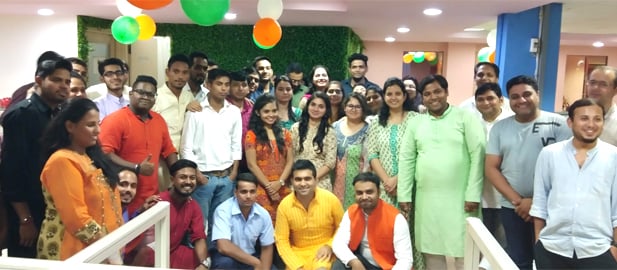We are living in a time where artificial intelligence is not just an innovation—it's an expectation. As enterprises look to differentiate and optimize, integrating AI into their workflows is no longer optional. But the rapid advancement in AI technologies has given rise to a sprawling landscape of tools, frameworks, and architectures. This evolution brings power but also confusion. How do you decide between Large Language Models (LLMs), Retrieval-Augmented Generation (RAG), and traditional Machine Learning (ML)? Each of these technologies has its strengths, limitations, and ideal use cases.
For tech leaders, making the wrong choice can lead to missed opportunities, technical debt, and inflated costs. The right decision, however, can boost operational efficiency, enhance customer experience, and unlock significant ROI. In this guide, we walk you through these AI paradigms, providing the clarity needed to choose the right stack tailored to your business needs.
The Explosion of AI Capabilities: A Double-Edged Sword
AI is evolving at breakneck speed. A decade ago, implementing a decision tree or training a simple regression model was cutting-edge. Today, generative AI and LLMs can produce code, write essays, summarize legal documents, and carry on contextual conversations. Simultaneously, traditional machine learning still powers critical functions like churn prediction, recommendation systems, and fraud detection. On top of that, hybrid architectures like RAG have emerged to bridge the gap between static models and real-time data retrieval.
This proliferation of technologies has created an environment rich in opportunity but plagued with complexity. For every business problem, there are a dozen AI solutions, each with its own set of tools, required skill sets, infrastructure demands, and cost implications. The chaos comes from the overlap—many tools claim to do similar things, but they differ drastically in execution and scalability. Understanding this explosion is the first step toward cutting through the confusion.
Understanding the Core Components
a. Large Language Models (LLMs)
LLMs represent a significant leap in natural language understanding and generation. These models are trained on massive corpora of text data, which enables them to respond in human-like ways, answer complex questions, summarize long documents, and even write poetry or code. But their capabilities extend far beyond novelty.
- What They Are: LLMs like GPT-4, Claude, and Gemini are built on transformer architectures and trained on terabytes of data. They can be used out of the box or fine-tuned for specific tasks.
- When to Use Them: They’re ideal for use cases requiring language generation, such as creating marketing content, drafting legal documents, or serving as conversational agents in customer service.
- Strengths: Their generative capacity is unmatched. They can produce fluent, coherent content quickly and handle diverse language tasks without retraining.
- Limitations: Despite their power, LLMs can hallucinate facts, be expensive to run at scale, and sometimes lack explainability, which is critical in regulated industries.
b. Retrieval-Augmented Generation (RAG)
RAG is one of the most promising architectures in enterprise AI today. It augments LLMs with external knowledge, typically by retrieving relevant documents or data from a structured index before generating a response.
- What It Is: RAG enhances the generative capabilities of LLMs by connecting them to up-to-date, domain-specific information. This helps mitigate hallucinations and makes the output more accurate.
- Use Cases: Commonly used in enterprise search, knowledge assistants, technical support bots, and anywhere responses must be based on proprietary or frequently changing data.
- Pros: RAG models can deliver accurate, contextually rich answers while maintaining the fluency of LLMs. They are also easier to update—just change the database, not the model.
- Cons: They are complex to implement, requiring orchestration of data ingestion, embedding generation, vector search, and prompt templating. They also introduce latency if not optimized.
c. Traditional Machine Learning
Traditional ML remains the backbone of many AI systems. These models handle structured data beautifully and are well-suited for tasks with clear input-output relationships.
- What It Is: These models—like random forests, gradient boosting, and neural networks—learn from structured data and are deployed for classification, regression, and clustering.
- Use Cases: Ideal for churn prediction, fraud detection, price optimization, and other numeric-driven business scenarios.
- Pros: They’re fast, explainable, and cheaper to maintain. With proper data hygiene, they can offer high accuracy and business value.
- Cons: Limited in scope—can’t handle unstructured data like text, images, or audio without extensive preprocessing.
Key Factors in Choosing Your AI Stack
Selecting the right AI stack is not a purely technical decision—it’s a strategic one that can shape your product’s trajectory, operational efficiency, and innovation capabilities. With a range of tools available, understanding your own business context becomes essential. From the type of problem you’re solving to your team’s expertise and infrastructure readiness, several variables influence the final choice. This section unpacks the key dimensions you must evaluate before investing in LLMs, RAG, or ML so you can make an informed, high-impact decision that aligns with your goals.
- Use Case Fit: Start by clearly defining the problem you're solving. Is it language-based or number-based? If you’re building a chatbot or automating document review, LLMs or RAG are better suited. For predicting customer churn or detecting anomalies, traditional ML is the answer.
- Data Strategy: Understand what data you have and in what format. LLMs thrive on unstructured text. ML models require clean, structured datasets. RAG can use a combination—structured metadata for search and unstructured documents for content.
- Latency & Performance: Some applications need real-time inference (e.g., fraud detection during a transaction). ML models are lightweight and can respond quickly. RAG systems and LLMs often require optimization for real-time use.
- Cost vs ROI: OpenAI’s GPT-4 or Claude API can get expensive at scale. Open-source models reduce cost but increase complexity. Traditional ML is cost-effective but may lack wow-factor for customer-facing use.
- Talent Availability: Can your team manage prompt engineering or maintain a vector database? If not, off-the-shelf ML or managed LLM APIs might be a better starting point.
- Integration Complexity: RAG setups involve many components—vector stores, embeddings, context parsing, and LLMs. ML models usually plug into existing analytics pipelines with less friction.
AI Stack Comparison Matrix
With so many moving parts in the AI ecosystem, it helps to step back and compare your options side by side. Whether you're drawn to the generative power of LLMs, the contextual reliability of RAG, or the speed and precision of traditional ML, each approach brings different trade-offs. This section presents a structured matrix to help you evaluate your options across crucial criteria—like cost, scalability, explainability, and performance—so you can align technical capabilities with your business expectations and constraints.
| Feature | LLMs | RAG | Traditional ML |
|---|---|---|---|
| Best for | Text generation, Q&A | Contextual Q&A, enterprise search | Structured data prediction |
| Data Requirement | Unstructured text | Structured + Unstructured | Structured only |
| Cost | High (API, infra) | Medium-High (infra-heavy) | Low (efficient models) |
| Explainability | Low | Medium | High |
| Real-time Capability | Moderate with tuning | Moderate (depends on infra) | High |
| Maintenance Complexity | Medium | High | Medium |
Architecture Patterns & Real-World Examples
While theoretical frameworks provide guidance, the real-world application of AI technologies brings valuable clarity. Seeing how businesses have successfully implemented different stacks reveals not just what’s possible, but what’s practical. This section highlights concrete use cases—ranging from customer support automation to personalized recommendations—that illustrate how LLMs, RAG, and ML are being integrated into production environments. These stories can serve as inspiration and benchmarks for your own AI initiatives.
- RAG in Customer Support Chatbots: A telecom enterprise implemented a RAG-based assistant that scanned internal knowledge bases, FAQs, and troubleshooting guides. The result? A 30% drop in support tickets and faster resolution times.
- LLMs for Content Automation: A SaaS marketing team used an LLM to auto-generate blog drafts, social media captions, and email campaigns. This cut content creation time by 60% while maintaining brand voice through prompt engineering.
- ML for Personalization Engines: An e-commerce business deployed gradient boosting models to personalize product recommendations. By analyzing user behavior and purchase history, they boosted conversion rates by 22%.
- Hybrid Models: Classic Informatics recently built a solution combining RAG for surface-level interaction and ML to score user intent. This created a dynamic interface for knowledge retrieval while enabling real-time analytics.
When to Build, Buy, or Fine-Tune
After choosing the right AI paradigm, the next decision is just as critical: should you build your solution in-house, buy a managed service, or fine-tune an existing model? Each path has distinct implications for cost, control, speed, and scalability. This section breaks down these three routes, offering strategic insights to help you determine the best way to deliver your AI solution while balancing agility, ownership, and long-term viability. Whether you’re a startup looking to ship fast or an enterprise aiming for data sovereignty, this guide will show you the optimal route.
- Build: Choose this path when your problem is unique, and your data is your competitive edge. For instance, if you’re a legal firm with thousands of proprietary documents, a custom RAG solution might be worth the effort.
- Buy (API Access): Perfect for fast MVPs or when you lack infrastructure. Plug-and-play LLMs from OpenAI or Claude are ideal for conversational interfaces and low-volume needs.
- Fine-Tune: Necessary when the generic outputs from models don’t match your brand tone, compliance needs, or domain specificity. Fine-tuning a small open-source LLM can be both economical and precise.
- Infrastructure Considerations: Cloud-hosted LLMs offer ease but may raise data privacy issues. On-prem open-source models give control but need more setup. ML can be hosted with minimal infra, making it ideal for scale-focused use cases.
Classic Informatics’ Recommendation Framework
Having worked with businesses across industries, Classic Informatics has developed a practical framework for guiding organizations through the AI stack selection journey. Rather than relying on buzzwords or vendor hype, our approach is grounded in business logic, data maturity, and engineering feasibility. This section introduces our multi-criteria decision model, shaped by real-world consulting and implementation experience. It’s a proven methodology that helps you move confidently from AI experimentation to sustainable deployment—ensuring your technology decisions drive measurable value.
We begin by analyzing:
- Problem Type: Is it prediction, classification, or generation? This defines the architectural direction.
- Data Landscape: What’s available and in what form? Structured spreadsheets or a goldmine of PDFs?
- Real-Time Needs: Do decisions need to be made instantly (like fraud detection), or can they be batched?
- Security & Compliance: Are you in healthcare, finance, or another regulated sector? That determines if on-prem is a must.
- Budget & ROI: We help estimate not just the upfront costs, but also long-term gains and total cost of ownership.
Through workshops, audits, and POCs, we help you go from idea to implementation with clarity and confidence.
Take the Next Step with AI Confidence
Choosing the right AI stack isn’t a decision to make lightly. It requires a deep understanding of your business goals, data readiness, and technical bandwidth. Whether you're looking to roll out an intelligent chatbot, automate document workflows, or power predictive analytics, aligning the right technology with your needs is critical to success.
At Classic Informatics, we don’t just build solutions—we build strategy-backed, future-ready AI systems that evolve with your business. Our experts are equipped to help you navigate LLMs, RAG, ML, and beyond, ensuring that you stay ahead in a rapidly changing tech landscape.






















